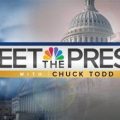“Public Figures” is Unveiled at the National Museum of Asian Art
A new statue celebrates the power of collective movements and marks the culmination of centennial celebrations at the National Museum of Asian Art.
On April 27, the National Museum of Asian Art unveiled Public Figures, a new sculpture by the contemporary Korean artist Do Ho Suh. The work was commissioned to mark the culmination of the museum’s celebrations in recognition of its 100th anniversary; it will remain on the Freer Plaza for the next five years, facing the National Mall.
There is so much symbolism imbued in the Mall itself, and there is certainly no shortage of monuments and memorials. Public Figures, however, is unlike any monument I have seen before.

To usher in the next century of the National Museum of Asian Art, artist Do Ho Suh (b. 1962, South Korea) was commissioned to create a special edition of his work Public Figures to be installed in front of the museum and facing the National Mall in Washington, DC.
The sculpture consists of a massive plinth supported by many small, individualized figures who are holding the block above their heads. The work was first presented as a part of Public Art Fund’s 1998 exhibition Beyond the Monument in Brooklyn; the commissioned work is a special edition of the original sculpture. Its intent is to challenge the tradition of memorializing the individual and instead focus on the collective nature of social movements. The sculpture does not reference a specific historic event; it simply reminds us that no piece of history is written by one person alone.
As a historian, I have seen my fair share of monuments, and yet this one strikes me as different than any I have seen before. The monuments that come to mind all recognize a sole person, whether confederate general or civil rights hero. They posit an individual as the face of a movement, without recognition of the collective effort that made their piece in history possible.
Public Figures immediately prompts us to question who we memorialize and how we might broaden the idea of what a monument can be. In the heart of the nation’s capital, where monuments and memorials commemorating individuals are scattered throughout the city, this statue is singular in its focus on the collective.
It is significant, too, to be able to prominently feature the work of a Korean artist. The National Museum of Asian Art was among the first museums in the U.S. to display Korean art, and it remains an important focus. Do Ho Suh was among the earliest contemporary artists featured in the Pavilion exhibition series, and his works have long been an essential part of our collections.
For me, Public Figures speaks not just to the values of the National Museum of Asian Art but to the whole of the Smithsonian. As a trusted public resource and an institution committed to telling the whole of history, we seek to widen the aperture on narratives that have focused exclusively on individuals by examining the full context of how those pivotal figures were shaped and cemented in our collective memory. This sculpture is an arresting reminder of our commitment to interrogate all the forces of change in our history, and to recognize those who may have been left out of the narrative before.
Posted: 9 May 2024
-
Categories:
Art and Design , Asian Art Museum , From the Secretary , News & Announcements







